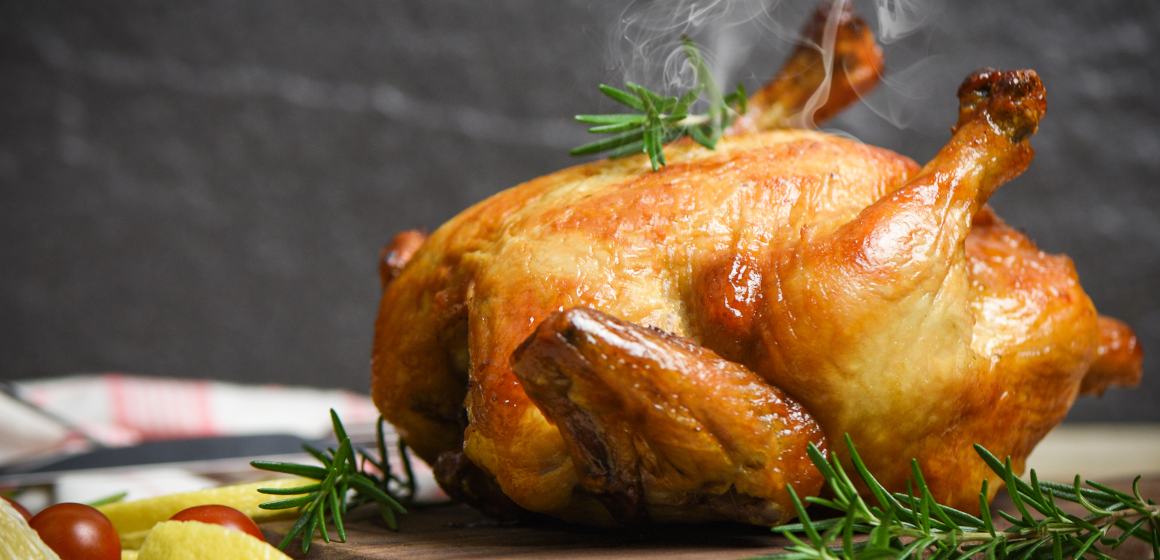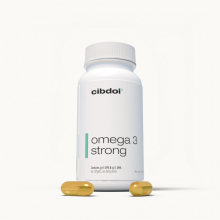Is Chicken a Good Source of Omega-3 Fatty Acids?
Published:
Omega-3 fatty acids are incredibly beneficial for health. Getting enough omega-3s from your diet is crucial. The main omega-3s are ALA, DHA and EPA. Chicken is one of the most widely consumed meats. But can chicken provide meaningful amounts of the key omega-3 fatty acids?
Contents:
- Overview of Omega-3 Fatty Acids
- Omega-3 Fatty Acids in Chicken
- Comparison of Omega-3s in Chicken vs. Seafood
- Chicken vs. Plant-Based Omega-3 ALA Sources
- Potential Benefits of Omega-3s in Chicken
- How to Increase Omega-3s in Chicken
- Healthiest Forms of Chicken for Omega-3s
- Key Dietary Sources of Omega-3 Fatty Acids
- Chicken and Omega-3 Fatty Acids
- Is Chicken a Good Source of Omega-3 Fatty Acids? Conclusion
Let's examine the omega-3 content of chicken and compare it to other dietary omega-3 sources.

Overview of Omega-3 Fatty Acids
Omega-3s are a type of polyunsaturated fat vital for overall health. The three primary dietary omega-3s are:
ALA
- Short for alpha-linolenic acid.
- Found mainly in plant foods like flaxseeds and walnuts.
- Offers cardiovascular and anti-inflammatory benefits.
DHA
- Docosahexaenoic acid.
- Primarily from fatty fish and fish oil.
- Critical for brain and eye health.
EPA
- Eicosapentaenoic acid.
- Also found mainly in seafood.
- Supports heart health and mental wellbeing.
ALA comes from plants while EPA and DHA come from marine sources. ALA can convert into EPA/DHA but only minimally, so seafood intake is vital.
Adequate intake of all three omega-3s is key for overall health. But does chicken provide meaningful amounts of these key fatty acids?
Omega-3 Fatty Acids in Chicken
The omega-3 content of chicken depends heavily on the bird's diet.
Conventionally farmed chickens fed grain have very little omega-3s.
However, pasture-raised chickens allowed to eat plants, seeds and insects produce eggs and meat higher in omega-3s.
Here is how chicken's omega-3 content compares to daily recommendations:
- ALA in chicken: Negligible amounts.
- EPA/DHA in chicken: Around 20-200 mg per 6oz serving.
- Daily recommendations: ALA 1.1-1.6 grams. EPA/DHA 250-500 mg.
While chicken may provide small traces of EPA and DHA, the amounts are low compared to recommended daily intakes.
Now let's examine how chicken's omega-3 profile compares to other high omega-3 foods.
Comparison of Omega-3s in Chicken vs. Seafood
Chicken generally contains far less omega-3s than most types of seafood.
For example:
- 6 oz chicken breast: about 32 mg omega-3s
- 6 oz salmon fillet: around 2,000 mg omega-3s
- 6 oz canned tuna: approximately 1,000 mg omega-3s
The EPA and DHA quantities in a standard chicken serving are minimal compared to fatty fish like salmon, which has over 60 times more.
Even leaner seafood like tuna is far higher in omega-3 content than chicken.
Clearly fish and seafood contain significantly higher beneficial omega-3 fats than chicken.
Chicken vs. Plant-Based Omega-3 ALA Sources
How does chicken's omega-3 profile compare to plant-based ALA sources?
Again, chicken provides virtually no ALA.
Meanwhile, just 1 tablespoon of flaxseed oil supplies over 7,000 mg omega-3 ALA.
And a 1 ounce serving of walnuts provides about 2,500 mg ALA.
So gram amounts of plant-based ALA omega-3 are found in common foods like flaxseeds or walnuts that chicken lacks.
Overall, chicken does not compare well to plant sources for providing omega-3 ALA either.
Potential Benefits of Omega-3s in Chicken
While amounts are low compared to seafood and plants, the modest EPA/DHA quantities in chicken may offer some benefits including:
- Helping reduce inflammation levels.
- Supporting brain and eye development in fetuses/infants.
- Contributing to heart health.
- Improving mental health and behavior.
However, to gain therapeutic, clinically meaningful benefits from omega-3s, much higher amounts are needed than chicken provides.
The omega-3 content from a few weekly chicken servings can contribute to total intake but is not highly significant.
How to Increase Omega-3s in Chicken
Here are some tips to increase the small omega-3 amounts found in chicken:
Choose Pasture-Raised Chicken
Chickens allowed to roam and eat plants, seeds and insects have far higher omega-3 content, up to 10 times more than conventionally farmed chickens.
Pasture-raised chicken provides 20-200 mg omega-3s per serving compared to 10-30 mg in conventional.
Add Omega-3 Fats to Chicken Dishes
Boost omega-3s in chicken recipes by adding:
- Olive oil or avocado oil
- Nuts like walnuts or pecans
- Seeds such as flax, hemp or chia
- Herbs like basil, oregano, dill
These all supply plant-based ALA.
Eat Chicken with Omega-3-Rich Sides
Round out chicken meals with higher omega-3 sides:
- Salmon
- Brussels sprouts
- Asparagus
- Broccoli
- Spinach salad with flaxseed dressing
Use Chicken in Omega-3 Recipes
Incorporate chicken in recipes along with omega-3-rich ingredients:
- Chicken salad with mayo, nuts, seeds, avocado
- Chicken stir fry with oils, veggies, herbs, spices, nuts
- Chicken tacos with plant toppings and salsa
While chicken itself is low in omega-3s, preparing it with omega-3-boosting ingredients can somewhat raise total intake.
Healthiest Forms of Chicken for Omega-3s
These types of chicken provide higher omega-3 content:
- Pasture-raised: Allowed to roam eating plants, insects and seeds. Highest in omega-3s.
- Organic: Must have outdoor access and be fed organic, non-GMO feed. Moderate omega-3s.
- Free-range: Some outdoor access but feed not regulated. Slightly more omega-3s than conventional.
- Conventional: Grain-fed and indoor-raised. Very low omega-3 levels.
When possible, choose pasture-raised chicken for maximum omega-3 content. Otherwise opt for organic or free-range chicken.
Key Dietary Sources of Omega-3 Fatty Acids
While chicken provides traces of omega-3s, rely on these foods for optimal omega-3 intake:
EPA/DHA Sources
- Fatty fish: Salmon, mackerel, herring, sardines
- Leaner fish: Tuna, cod, tilapia
- Seafood: Oysters, mussels, crab
- Fish oil and algal supplements
- Grass-fed meat and dairy
ALA Sources
- Seeds: Flaxseeds, chia and hemp seeds
- Oils: Flaxseed oil, soybean oil, canola oil
- Nuts: Walnuts, pecans, hazelnuts
- Green leafy vegetables
- Herbs and spices: Basil, oregano, tarragon
Aim for 1-2 fatty fish servings weekly plus daily ALA sources like flaxseeds, walnuts or omega-3 oils.
Chicken and Omega-3 Fatty Acids
In summary:
- Chicken provides only small omega-3 amounts, mainly 20-200 mg EPA/DHA per serving.
- It is far lower in omega-3s than fatty fish, with over 60 times less per serving.
- Chicken also has negligible omega-3 content compared to plant sources like flaxseeds, walnuts and oils.
- Choosing pasture-raised chicken will provide the highest omega-3 amounts.
- Boost omega-3s in chicken meals by pairing with high omega-3 sides and ingredients.
Is Chicken a Good Source of Omega-3 Fatty Acids? Conclusion
While chicken contains tiny amounts of beneficial omega-3 fatty acids, it cannot be considered a significant source compared to oily fish, plant oils, nuts and seeds.
To meet your daily omega-3 requirements, be sure to regularly eat fatty fish, flaxseeds, walnuts, oils and other omega-3-rich foods. Chicken can contribute modest traces as part of an overall diet adequate in anti-inflammatory omega-3 fats for optimal health.















